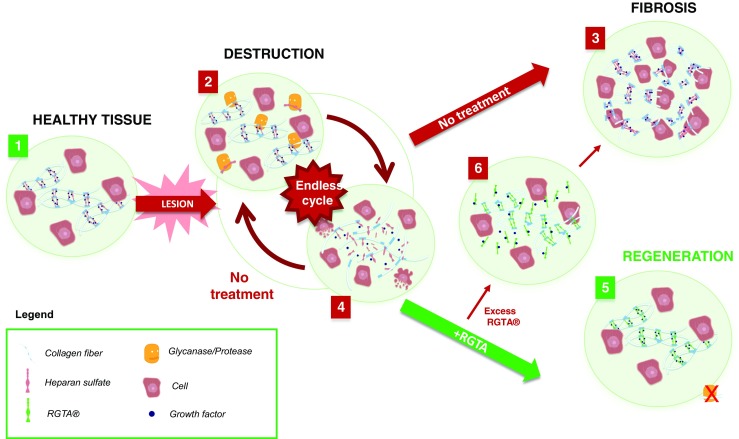Fig. 1.

Mode of Action of ReGeneraTing Agent (RGTA®) Following Extensive Tissue Damage. 1. The Extracellular Matrix (ECM) organization in healthy tissue (left panel). Blue dots correspond to communication peptides, stored and protected by glycosaminoglycans. Heparan sulfate (HS) (light pink helices) links the matrix proteins (white fibers) to form a scaffold around cells. 2. Following extensive tissue damage, HS is degraded by glycanase (yellow figurines), the ECM scaffold structure is destroyed and proteases (yellow figurines) may enter, destroying matrix proteins and stored growth factors. 3. A rapid repair response is triggered resulting in scars or fibroses. 4. If the cause of the lesion is not resolved, wounds remain in an inflammatory phase, leading to a cycle of repair and destruction. 5. RGTA® (green helices) replaces degraded HS, allowing reconstruction of the ECM scaffold and restoring the cellular microenvironment. This facilitates tissue regeneration and restoration of tissue to a state similar to that of healthy tissue. 6. Excess RGTA® may hinder the healing process by drawing growth factors and communication peptides away from the wound site. In this situation, the bioavailability of growth factors required for efficient wound healing is reduced, emphasizing the need to optimize the RGTA® treatment protocol (dose and timing) in accordance with the tissue specific matrix turnover
